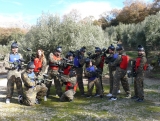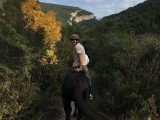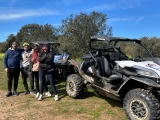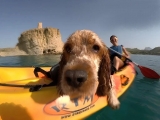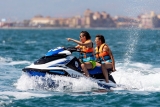Have you seen the first snowflakes fall? It's time to practise adventure sports—where? On the ski slopes. There are countless sports to enjoy throughout the year, and as expected, winter also brings plenty of excitement.
How about walking in the snow? You might think it's cold, that you'd get tired quickly, or that your feet would sink... Well, you might feel the cold, but just bundle up properly and prepare for a day in the snow. As for getting tired, it's obviously not the same as walking on solid ground, but would you really let this opportunity pass? You can rest when you get home! And about your feet sinking—haven't you heard of snowshoes?

Snowshoes are the ideal tool for walking across the white landscape. Nature lovers can't miss this activity, so think twice before deciding to stay at home watching a film with the heating on. Trying to walk on snow can be very difficult—your feet sink, and you end up exhausted without making much progress.
But with snowshoes, you'll realise it's much easier than you first imagined, allowing you to walk for much longer and more comfortably than it seems. An invention that has been used by mountaineers for centuries, but over the years has evolved into highly sophisticated gear.

Using them isn't very complicated—the only thing you need to get used to is the size of your feet: they'll seem wider than usual. It's important that the snowshoes have heel lifts and that you ascend in a zig-zag pattern. When descending, keep the snowshoe in a fixed position for better control, and avoid icy slopes.
They feature movable bindings that lock during descents and make climbs much smoother. It's crucial to choose a pair that feels completely comfortable, as a snowshoe hike can last hours, and discomfort can ruin the experience.

The size of the snowshoe should correspond to your weight, and remember that lightweight materials may be less durable. Pay attention to your boots, as they must fit the snowshoe bindings. If you choose ones with straps, you won't have to worry—they adapt to all types of snowshoes.
One important tip: if the snow is hard, you'll need snowshoes with a metal blade on the sides and toe area. They're not recommended for icy surfaces, but a pair of poles should never be missing from your gear.

Once you're all set, don't forget to visit a snowshoe school, where they can teach you not only how to use them but also show you some of the most stunning landscapes.





